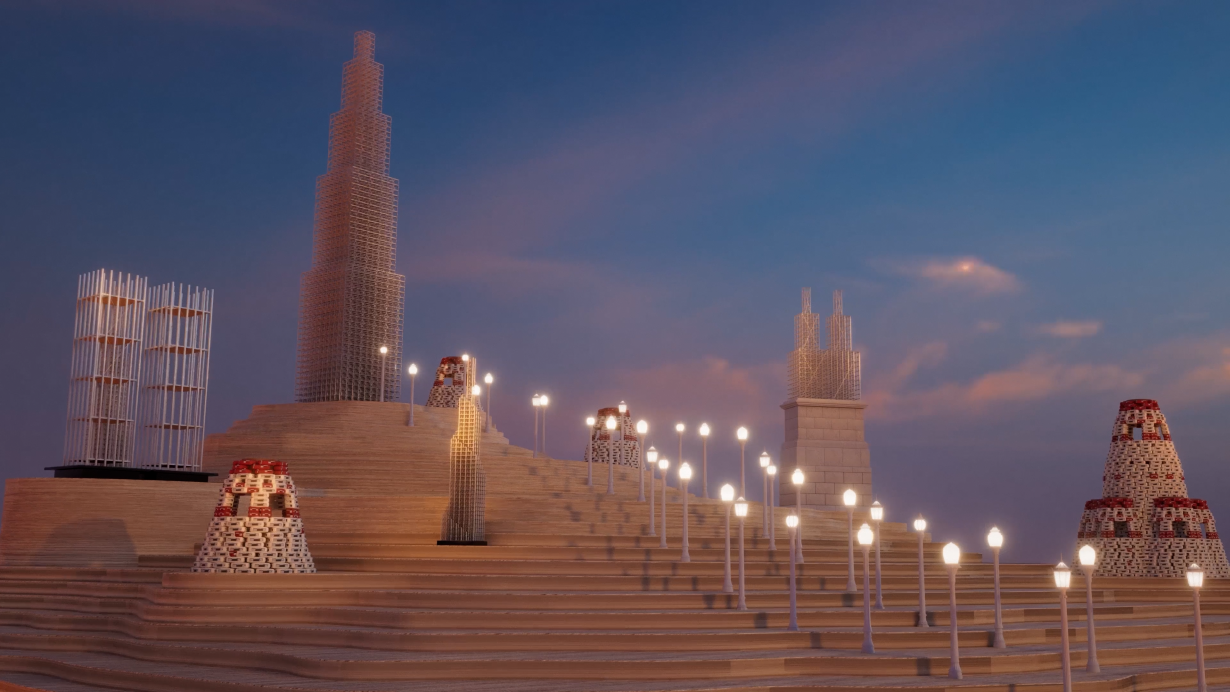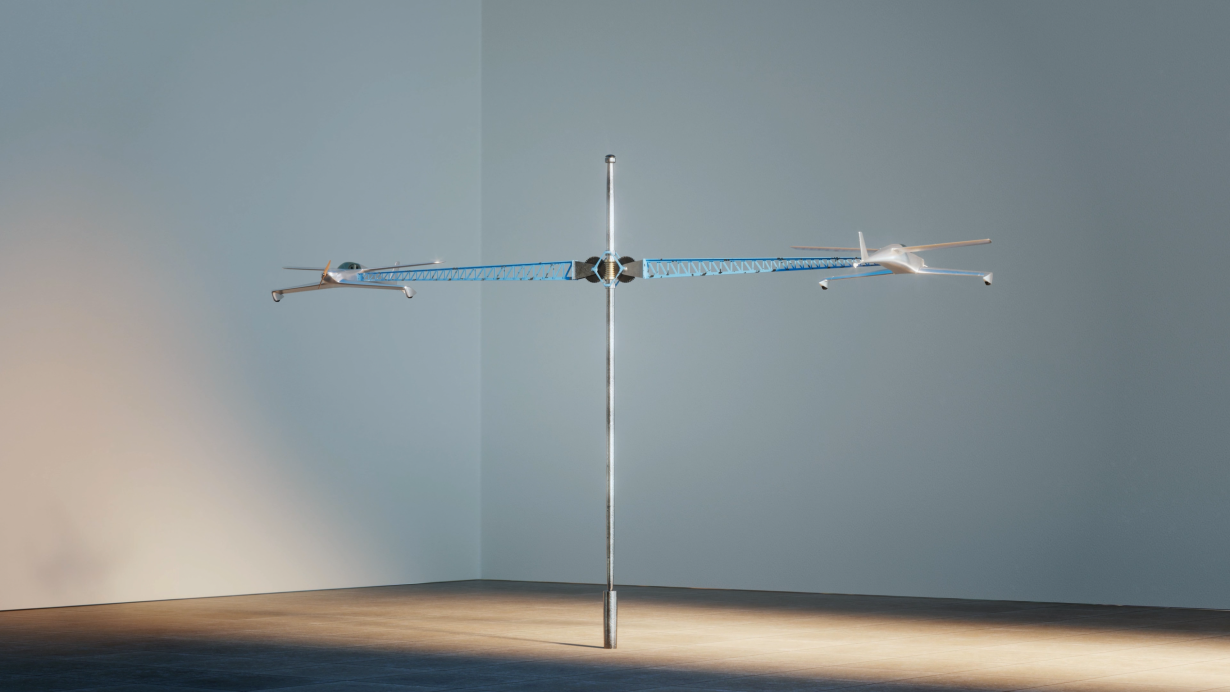ArtReview Asia and Nowness Asia present a new series of digital artworks based on unrealised projects by pioneering artist Chris Burden, produced by TRLab, in partnership with the Chris Burden Estate, on view at ART SG at the ArtReview Asia + Nowness Asia booth on Level 1.
Supported by Ferragamo
This month TRLab is showcasing a new series of digital artworks that realise a number of projects by pioneering artist Chris Burden that were unrealised at the time of his death. Based on the artist’s original content and designs, the works in this educational digital experience, created in partnership with the artist’s estate, use technology to faithfully recreate Burden’s concepts in motion and in 3 dimensions, with the goal of introducing his unique ideas to new digital-centric audiences of art enthusiasts. Despite his interest in the bold and sometimes brutal, Burden’s sculptural ideas have a sense of whimsy written large, trying out the seemingly impossible on a monumental scale – from flying steamrollers to 20-metre model skyscrapers made of toy parts. But behind this apparent playfulness, Burden often drew on older building designs and engineering structures, extending the boundary-pushing role of historical inventors and innovators to create an energetic relay between past and present.


In this spirit, TRLab has created a series of Chris Burden’s unrealised works as animated digital artworks, in particular focusing on a selection of the former that were too audacious or technically complex to complete during the artist’s lifetime. From an enormous weathervane made with a fullscale barge, to The Ever Burning American Flag (as Burden noted in his 2009 drawn plan of the artwork, ‘They can’t burn our flag because its already on fire!’), these editions display the scope and enduring pull of Burden’s imagination.


The Burden Water Wheel (based on a 2013 drawing by the artist) appears as a massive mill churning in shallow water, and while it recalls Burden’s motorcycle-powered sculpture The Big Wheel (1979), it nods to a different Burden. Henry Burden (no relation) was a nineteenth-century engineer who designed what was then the world’s most powerful water wheel to activate his ironworks in Troy, New York, a design that was superseded by steam power, but that went on to inspire the Ferris wheel.

TRLab has also brought to life immersive views from Xanadu, a largescale work that Burden proposed in 2008 and worked on until his passing, in 2015. Xanadu was designed to incorporate several of Burden’s works – such as the Urban Light (2008) installation of historical streetlamps from Los Angeles, alongside several of his DIY concrete-bag Beehive Bunkers (2006) and imposing buildings made from Erector Set toy parts – as a miniature fictional city that, as fitting for Burden, would combine practicality and wonder, stretching the sense of what’s possible.

About Chris Burden
Chris Burden (1946–2015) was a pioneering American artist who revolutionised performance art during the 1970s, showcasing his fearless exploration of the limits of the human body and artistic expression. Known for daring and provocative works such as Shoot (1971), during which he was shot (by an assistant wielding a rifle) in the left arm, 747 (1972), in which he shot a handgun at a passing passenger plane, and Trans-Fixed (1974), for which the artist was crucified onto a VW Beetle before it was driven out of its garage, Burden pushed the boundaries of art, challenging the relationship between artist and audience, testing the limits of the rules of art and the rules of society, and blurring the distinctions between performance and reality. By the late 1970s Burden’s focus turned to largescale kinetic installations and sculptural works, including scale reconstructions of New York City’s Hell Gate railway bridge, cardboard models (arranged like a shoal of fish) of every submarine that had been deployed by the US Navy, a crewless, self-navigating yacht (Ghost Ship, 2005), a series of lifesize DIY bunkers and various configurations of antique streetlamps, among them Urban Light (2008), which contains 202 examples of such street furniture and is a permanent installation outside the Los Angeles County Museum of Art.
About TRLab
TRLab fuses Web3 technology with fine art expertise to pioneer the future of collecting. TRLab has successfully designed and launched digital art experiences with artists, estates, and institutions, including ‘The Calder Question’, a multi-season educational project developed with the Calder Foundation; ‘Your Daytime Fireworks’, an interactive collecting journey with contemporary artist Cai Guo-Qiang, which was shortlisted for a 2022 Lumen Prize; and ‘Vogue Meta-Ocean’, the first digital art collection curated by Vogue editors worldwide. ‘Exploding the Self’, a 2021 limited-edition NFT series TRLab co-developed with Cai Guo-Qiang, is now represented in the permanent collection of the Los Angeles County Museum of Art (LACMA). A women-led company, TRLab was co-founded in 2021 by Audrey Ou, CEO and Xin Li-Cohen, Chairwoman of TRLab and a non-executive Deputy Chairman at Christie’s.
All digital artwork images courtesy TRLab and Chris Burden Estate